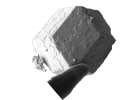Research Topics
Nanostructured composite materials
The research and development of nanostructured and composite materials (incl. nanocomposites) is one of the most interdisciplinary areas of materials science. Due to the often unique and sophisticated structuring, nanocomposite materials can reveal unique physical and chemical properties, significantly different from the bulk properties of their components.

Research and Applications
Therefore, especially hierarchical self-organized nanostructured materials are in focus of today’s nano- and materials science and are important not only for basic research, but also for a number of promising applications in the fields of medical implants, energy harvesting and storage, sensors, building materials and many more.
Philosophy
The main philosophy driving our research is to get a deeper insight into the fundamental principles of structuring, formation and functionality of advanced nanostructured and composite materials from mineralized biological hard tissues and related biomimetic/bioinspired systems to self-assembly of nanoparticles.
Summarized:
In general,our research is directed to the detailed structural, morphogenetic and properties characterization of nanostructured composite materials in order to understand how these complex and unique systems form and function. The following graph illustrates the intersection areas of biological, biomimetic, and artificial nanostructured material.
New discoveries are leading to an ever increasing understanding of biological materials as well as to an improvement of the properties of biomimetic and artificial materials.




